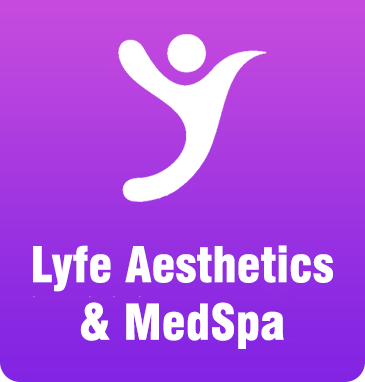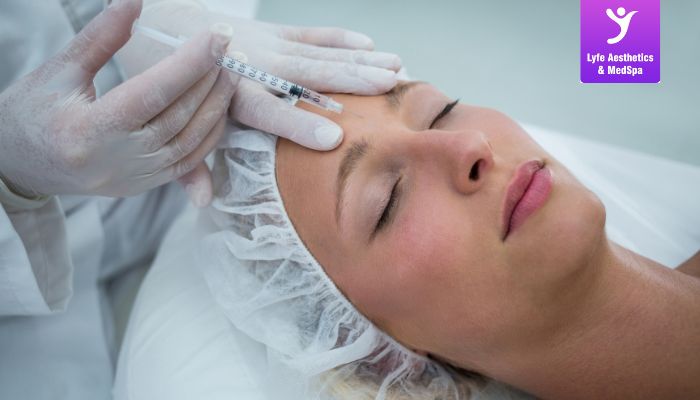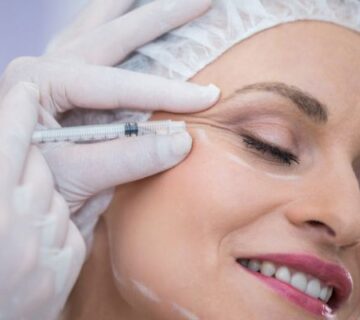Ever wondered how your favorite celebrities maintain that effortlessly smooth, youthful glow? Botox might just be their secret weapon—and it could be yours too! This incredible treatment goes far beyond reducing wrinkles; it enhances facial symmetry, prevents new fine lines, and even offers medical benefits like migraine relief and reducing excessive sweating. From how it works to what you can expect during and after the procedure, we’ll guide you through everything you need to know. Whether you’re curious about anti-aging solutions or exploring ways to enhance your appearance, this article will give you all the insights to make an informed decision.
Table of Contents
What is Botox Treatment?
Botox, derived from the bacterium Clostridium botulinum, is a popular cosmetic treatment used to reduce wrinkles and fine lines. By temporarily relaxing facial muscles, it softens dynamic wrinkles caused by repetitive movements, such as crow’s feet, frown lines, and forehead creases. Its effects last 3-6 months, delivering smooth, refreshed skin.
Apart from wrinkle reduction, Botox is used for subtle eyebrow lifts, jaw slimming, and even reducing excessive sweating (hyperhidrosis). It’s FDA-approved and safe when performed by a licensed professional. Mild redness or swelling may occur temporarily. Botox suits both those seeking anti-aging benefits and younger individuals willing to prevent early wrinkles.
Also read: Dysport vs Botox
How Botox Works?
Botox works in the region connecting your nerves and muscles, called the neuromuscular junction. When you make facial expressions like smiling or frowning, certain muscles contract repeatedly, eventually creating wrinkles and fine lines. Botox, which is a purified form of the botulinum toxin, is injected into these overactive muscles. It temporarily blocks the release of a chemical called acetylcholine, which is responsible for triggering muscle contractions. By calming these muscle movements, the treated areas relax, reducing the appearance of wrinkles and preventing further appearance. What makes Botox unique is its precision—it targets only specific muscles, leaving the rest of your face free to move naturally.
Botox Procedure – Step-by-Step Guide
- Consultation
A qualified practitioner will discuss with you – your goals, medical history, and any other concerns. Then he will examine the areas you want to treat and explain the procedure details. - Consent
Before the procedure, you’ll review and sign a consent form. The provider will also recap the treatment plan and answer any last-minute questions you have. - Preparation
- The practitioner may ask you to make facial expressions to identify injection points. Some may mark these areas, while others do not.
- The treatment areas will be cleaned with a non-alcohol cleanser.
- Botox Injection
- Using fine, medical-grade needles, Botox is injected into specific muscles.
- The number of injections depends on the areas being treated (e.g., forehead, crow’s feet, etc.). Typically, the procedure involves multiple small injections.
- The process usually lasts 10–30 minutes and may feel like tiny pinpricks.
Recovery and Aftercare for Botox Treatment
Taking care of yourself after a Botox treatment is crucial to getting the best results and ensuring your skin looks great. Here’s what you need to know:
What to Do Immediately After Botox
The first 24-48 hours after your treatment are essential for proper healing. Follow these tips for better results.
- Stay Upright: Avoid lying down for at least 4 hours to prevent the Botox from shifting to unintended areas.
- Be Gentle with Your Face: Do not rub or massage the treated areas for at least 24 hours.
- Apply Cool Compresses (if needed): To minimize swelling or bruising, use an ice pack wrapped in a clean cloth for short intervals.
- Avoid Vigorous Exercise for 24-48 hours. Elevated heart rate and sweating can reduce the effectiveness of Botox.
What to Avoid After Botox
- Excessive Heat: Skip saunas, hot tubs, and hot showers for 24 hours. Avoid prolonged sun exposure – protect your skin with broad-spectrum sunscreen (SPF 30 or higher).
- Alcohol and Blood-Thinning Medications: Don’t consume alcohol and medications like ibuprofen or aspirin for the first 24-48 hours, as these can worsen bruising.
- Facials or Skin Treatments: Wait at least 1-2 weeks before scheduling next professional facials, massages, or other treatments for your skin.
When to Expect Results
Patience is key after Botox. Here’s a general timeline for what to expect:
- 24-48 Hours Post-Treatment: Minor side effects, such as redness or swelling, should subside.
- 3-7 Days: You’ll typically start noticing more relaxed muscles and smoother skin.
- 14 Days: Full results are visible. Your skin will look refreshed with fine lines or wrinkles significantly reduced.
Benefits of Botox
Cosmetic Benefits
- Reduces Wrinkles and Fine Lines: Smoothens the crow’s feet, forehead lines, and frown lines by relaxing the muscles under the skin.
- Prevents New Wrinkle Formation: By limiting repetitive muscle movements, Botox helps delay the development of new wrinkles over time.
- Enhances Facial Symmetry: Improves balance in facial features by softening and relaxing targeted areas, creating a natural appearance.
- Quick and Non-Invasive: Botox is a simple, outpatient procedure that doesn’t require surgery, stitches, or a long recovery period.
- Instant results: Visible results appear within days and last 3 to 4 months, helping you look refreshed.
Medical Benefits
- Relieves Chronic Migraines: FDA-approved for reducing the frequency and severity of chronic migraines by targeting nerve signals that trigger pain.
- Reduces Excessive Sweating (Hyperhidrosis): Drastically decreases sweat production in areas like the underarms, hands, and feet by blocking nerve signals to sweat glands.
- Eases Muscle Spasms and Tension: Effective in treating conditions like eyelid spasms, TMJ disorders, and neck muscle contractions by relaxing hyperactive muscles.
- Helps with Overactive Bladder: Botox can alleviate the symptoms of overactive bladder by relaxing the muscles that cause frequent urination.
- Improves Lazy Eye (Strabismus): Balances muscle movements in individuals with misaligned eyes, reducing strain and improving vision.
Psychological Benefits
- Boosts Self-Esteem: The smoother, more youthful appearance from Botox helps you feel more confident in personal and professional settings.
- Enhances Mood: Studies suggest that Botox can reduce symptoms of depression and anxiety.
- Control Over Aging: The magic of botox helps individuals feel young with addition of enhancements and reducing wrinkles.
Side Effects of Botox
Common Side Effects
1. Injection Site Reactions
After Botox injections, you might notice tenderness, swelling, or bruising at the injection site. These reactions are typically short-lived and can often be managed by applying a cold pack to the area. Some may also experience mild redness or discoloration.
2. Headache and Flu-Like Symptoms
It’s not unusual to experience headaches or flu-like symptoms, such as fatigue, mild fever, or achy muscles, after Botox treatments. These symptoms tend to resolve within a few days without the need for medical intervention.
3. Dry Eyes or Eye Irritation
When Botox is used near the eyes, side effects like dry eyes, double vision, or sensitivity to light may occur. Using lubricating eye drops or avoiding bright environments can help alleviate discomfort.
4. Muscle Weakness Near the Injection Site
You may notice that the muscles close to the treated area feel weaker than usual. This effect is expected for the areas being targeted by Botox, as it temporarily reduces muscle activity.
5. Neck and Back Pain
Some individuals report mild discomfort in the neck or back muscles after receiving their Botox injections. This could last a few days and is generally manageable with over-the-counter pain relief.
6. Difficulty Swallowing or Speaking
When Botox is used to treat conditions involving the neck or throat, temporary difficulty with swallowing or speaking may arise. Discussing this with your doctor can help you plan for any dietary adjustments or treatment tweaks.
Serious Side Effects
Though rare, some serious complications can arise. These require immediate medical attention.
1. Allergic Reactions
Rare allergic reactions may include difficulty breathing, swelling of the face or throat, rash, or severe itching. If you experience any of these symptoms, stop treatment and seek immediate medical help.
2. Toxin Spread to Other Areas
While rare, Botox has the potential to spread beyond the injection site, leading to a condition known as botulism. Symptoms might include muscle weakness, trouble breathing or swallowing, loss of bladder control, or blurred vision.
3. Drooping Eyelids and Eyebrows
When Botox is injected close to the eyes or forehead, it can sometimes cause drooping of the eyelids or eyebrows, known as ptosis. This effect usually resolves as Botox wears off but can take a few weeks.
4. Difficulty Urinating
Botox can cause urinary retention, especially when used for bladder-related treatments. Individuals may find it challenging to fully empty their bladder. If symptoms like pain or inability to urinate appear, consult immediately with the doctor.
Short Comparison between Botox and Fillers
| Feature | Botox | Fillers |
|---|---|---|
| Purpose | Reduces fine lines and wrinkles by relaxing muscles | Restores volume and plumps areas like cheeks, lips, and folds |
| How It Works | Freezes muscles temporarily to smooth dynamic wrinkles caused by facial expressions | Fills in static wrinkles and areas with loss of volume using substances like hyaluronic acid |
| Areas Treated | Forehead lines, crow’s feet, glabellar lines (“11” lines) | Cheeks, lips, under-eye hollows, nasolabial folds |
| Results Duration | Lasts 3-4 months, sometimes up to 6 months | Varies, typically lasts 6 months to 2 years depending on the filler used |
| Side Effects | Temporary bruising, headache, drooping eyelids | Temporary swelling, redness, or lumps at the injection site |
Frequently Asked Questions (FAQs)
1.How long do results from the Botox treatment last?
Typically, 3–6 months. With repeated treatments, results may last longer as muscles adapt to reduced movement.
2.How much does Botox cost?
Prices vary by provider expertise and units required. Clinics often provide quotes during consultations
3.Are there any risks associated with the Botox treatment?
Temporary bruising, redness, or swelling at injection sites are the most common side effects. Serious complications (e.g., drooping eyelids) are rare and often linked to improper administration.
4.What areas can be treated?
Common treatment zones include horizontal forehead lines, crow’s feet, and glabellar (between-eyebrow) lines. Other uses include jaw slimming, chin dimpling, and addressing TMJ discomfort.
5.What’s the recovery time?
No downtime is required. Mild redness or swelling at injection sites usually subsides within hours, and patients can resume normal activities immediately.
Botox offers a blend of cosmetic enhancements and medical solutions, helping you achieve smoother skin, improved health, and renewed appearance. Whether you’re looking to reduce wrinkles or explore other benefits, Botox could be the best solution.
Ready to take the leap? Consult experienced and trustworthy professionals at Lyfe Aesthetics and MedSpa – the best place for botox treatment in Indianapolis.



No comment